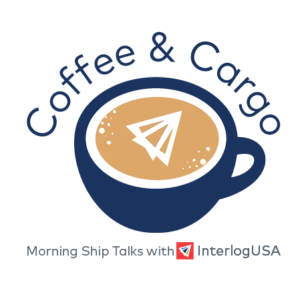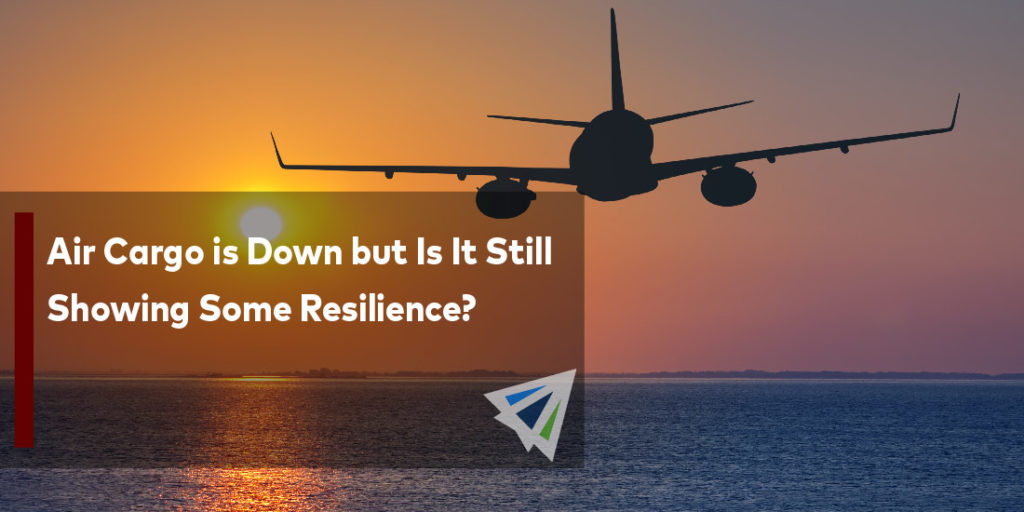Competitive Edge
UPDATE: U.S./Canada Ports – Number of Vessels at Anchor as of 10-18-22
- Savannah: 32 Vessels at Anchor (+1)
- Vancouver: 30 Vessels at Anchor (+3)
- Houston: 17 Vessels at Anchor (-11)
- Los Angeles/Long Beach: 14 Vessels at Anchor (+7)
- New York/Newark: 11 Vessels at Anchor (+1)
- San Francisco/Oakland: 10 Vessels at Anchor (-1)
- Mobile: 7 Vessels at Anchor (-10)
Note: This count does not include vessels moored and being unloaded at port docks. Colored numbers in parentheses represents the change from last week over. Data is courtesy of MarineTraffic live vessel traffic map.
Have another U.S. or Canadian port you’d like us to track weekly? Let us know!
Takeaways
The total waiting vessel queue at North American ports is fewer than 100—similar to the level observed in June.
- U.S. West Coast: Consistent with little change has been the mantra the last few weeks for WC ports. However, Los Angeles and Long Beach observed a week-over-week spike of seven vessels to their backlog. Quick jumps like this are not uncommon though. Do not expect this trend to hold.
- U.S. Gulf Coast: Houston has enjoyed a generous drop from last week. Will Gulf’s largest port settle into the upper teens going forward? We will have to see. Meanwhile, Mobile has been one of the more fascinating developments. The Alabama port is trading off each week with either an erratic jump or fall to its vessel backlog.
- U.S. East Coast: Savannah remains at the forefront of vessel congestion. However, its port authority believes falling import volumes will bring this number down. New York and Newark as stayed in the low teens, and even single digits, for the past few weeks. With shipper demand low, it is likely that this number will either settle as it is or continue to fall.
- Canada: Vancouver has been subject to vessel berthing delays keeping its congestion count high, however the port has seen gradual improvements to its operations that hopefully will sustain and bring down this number.
IMPORT: Asia to North America (TPEB)
Recent Developments:
- Contract negotiations between the International Longshore and Warehouse Union (ILWU) and Pacific Maritime Association (PMA) remain active. The existing labor contract between the two parties expired July 1.
- Los Angeles and Long Beach remains impacted on the rail side of things. Dwell times are around 15 days. However, incremental improvements to congestion at some inland hubs are promising signs going forward.
Rates: Rates continue to fall. Notably from Chinese base ports to all U.S. coasts.
Space: Space is open.
Capacity: Lower demand has led to carriers reducing their capacities. However, capacity is generally open for transpacific eastbound trade.
Equipment: Chassis availability is increasing. Inland rail ramps remain congested, however BNSF Railway has lowered container backlogs at St. Louis and Fort Worth which has freed up flows of inbound imports (notably from Los Angeles and Long Beach).
TIPS:
- Book at least two weeks prior to the ready date.
- For cargo ready now, take advantage of open space and fallen rates on the spot market.
- Blank sailings have been more common. Keep this in mind as it affects schedule integrity.
IMPORT: Europe to North America (TAWB)
Recent Developments:
- Northern European hubs, such as Rotterdam, Antwerp, and Hamburg, remain congested.
- Labor-related tensions remain gripping Great Britain’s ports as dockworker unions seek a new pay deal that will match with inflation rates.
- For both the port strikes at Felixstowe and Liverpool, the dockworkers have warned the ports respectively that further walkouts could occur should a deal not be reached.
- Workers at both ports have engaged in two respective walkouts over the last couple of months. No deal or tentative agreement have been reached.
Rates: Rates have seen some decreases. However, not at the same clip as other trade lanes. When more capacity is introduced, expect rates to trend downward.
Space: Space remains tight to the USEC. However, space has opened for direct routings to the USWC.
Capacity: Capacity is increasing as carriers are adding larger vessels to USEC loops in October.
Equipment: Equipment at European seaports is not as readily available as it has been for the past few months. Inland terminals in Europe are also still reporting equipment shortages. On the U.S. side, chassis availability has increased.
TIPS:
- Book five or more weeks prior to ready date.
- Stay up to date with your forwarder and carrier advisories on added capacities and declining rates for the transatlantic westbound lane.
- Strongly consider premium services for no-roll options and improved reliability of cargo.
EXPORT: North America to Asia
Recent Developments:
- For the U.S., port congestion remains an issue for Savannah and Houston.
- Diminished schedule integrity continues to challenge post earliest return dates.
- Vessel arrivals remain smooth for USWC POLs.
Rates: So far, no GRIs announced for October.
Capacity: Available capacity remains fluid for USWC POLs.
Equipment: Inland ports still are reporting container and chassis deficits (the latter improving). Standard equipment at ports remains available unless advised otherwise.
TIPS:
- Book four to five weeks prior to the time of departure to secure necessary equipment and vessel space.
InterlogUSA Proudly Presents... Our New Podcast!

Offering insights into breaking news, market trends, our company’s history, and more.
“FreightFM” features short-form video interviews with InterlogUSA’s industry experts.
Did You Know: The Port of Charleston’s Harbor Deepening is Expected to Reach Completion Next Month
This project will deepen Charleston’s harbor to 52 feet caps – which has been an 11 year task to do so.
The entrance to the channel was also widened from 47 to 54 feet, making the Port of Charleston one of the deepest harbors in the U.S. East Coast.
Additionally, this will allow the port to handle the 20,000 twenty-foot equivalent units (TEUs) that are heading to the USEC with imports from Southeast Asia and the Indian Subcontinent.
Source: Journal of Commerce
Freight News
What Asia Import volumes landing on the U.S. East and Gulf Coast have looked like this year
For the first nine months of 2022, Asia import volumes landing on the U.S. East and Gulf Coasts surged – total U.S. imports from Asia through September were up 4.5 percent year-over-year.
Specifically, import volumes from Asia to the East Coast increased nearly 12 percent from January to September, compared with the year-ago period, data shows. While import volumes from Asia to the Gulf Coast surged a little over 29 percent and import volumes from Asia to the West Coast declined 1.7 percent during that timeframe.
However, for the month of September, U.S. imports from Asia declined by 10.4 percent from August, which is the lowest monthly volume since last December, the Journal of Commerce reports. Additionally, on a year-to-year basis, September imports from Asia were down nearly 3 percent from September last year.
So, what are the reasons the East and Gulf Coasts are seeing more volume than usual?
One of the biggest reasons is the uncertainty around the ILWU-PMA contract negotiations that are currently still happening, as the contract ended on July 1st.
Another reason are the questions regarding drayage capacity at the ports in California due to the implementation of AB5 and the new environmental restrictions on older trucks.
Lastly, marine terminal congestion and vessel backlogs earlier this year out on the West Coast have played a part in why more cargo has been pushed to the East and Gulf Coasts.
An update on the Mississippi Barge and the challenges it poses
The Mississippi River is a crucial waterway for trade and lately, the lower water levels have impacted the amount of commodities that can be imported or exported out of New Orleans, as barges are unable to be fully loaded. Data from the U.S. Department of Agriculture’s weekly transportation report, shows barge tonnages were reduced on the river by more than 20 percent.
How did the Mississippi River low water levels get to this point?
A massive drought has been happening which has created low water levels causing completely dry sand stretches along the River. Back on October 7th it was closed (but now reopened with certain restrictions) near Stack Island and Memphis because of the unideal conditions.
This can impact agriculture shippers for corn, soybeans, and wheat, who use barges to move their grain in bulk, as a cheaper method to trucks or rail. According to CNBC, just a little under 47 percent of all grain is moved by barge and approximately 5.4 million barrels of crude and 35 percent of thermal coal are moved on the Mississippi.
The timing of all this has been less than ideal. Some shippers have had to make a decision whether they keep their route plans how they were prior or decide to reroute the cargo which causes its own challenges in itself.
The U.S. is not the only place that has been impacted by low water levels. The Rhine River in Europe has also experienced low water levels this year, but is since back to normal levels.
Watch Today's Webinar and Sign Up for Next Month's

Take a look at today's webinar where we discussed a variety of topics including:
-New Detention and Demurrage Law in California
-The Busy Holiday Season for Domestic Shippers
-How Buying Patterns Have Changed Throughout the Second Half of 2022
-Current Events
-Live Q&A!
If you would like to sign up for our next webinar in November, please make sure to click the sign up button below!
Sign up for our
industry answers
Our team works to provide valuable, unique, and relevant content to assist you in finding solutions. Sign up now.




